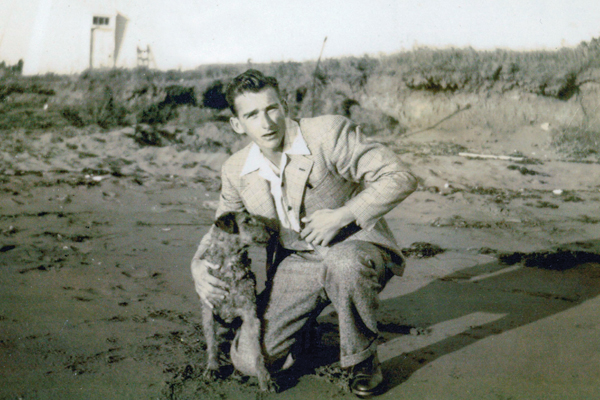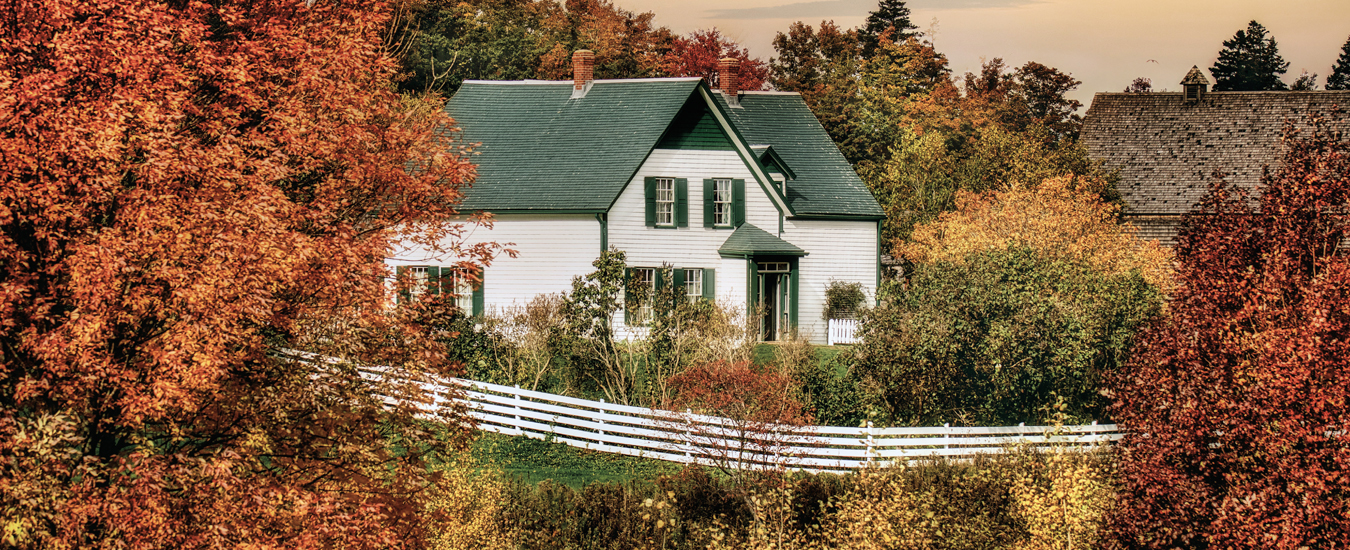Tim Hortons was not taking student summer job applications in the early 1940s, so whatever job a young man could swing was likely to find him working outdoors.
Such was repeatedly the case for Prince Edward Island centenarian Clive Stewart, who had a brief but warm association with the most famous house in Canada, chronicled in the decades-long diary of Myrtle Webb, a cousin and confidante of renowned Island author Lucy Maud Montgomery.
Montgomery’s 1908 novel Anne of Green Gables sets much of her celebrated children’s classic at Myrtle’s and husband Ernest’s home and 57-hectare farm in Cavendish, which today includes the Parks Canada National Historic Site known as Green Gables Heritage Place. The Webbs owned the house and farm from 1909 until the Prince Edward Island National Park was declared and then officially opened in 1937, made possible in part by a series of expropriations that included the Webbs, but who were granted another 10 years of residency at their house.
With Montgomery’s novel driving global interest in Cavendish as a literary mecca, the Webbs gradually adapted their lives, posting signs identifying iconic places that are described in the book, such as Lover’s Lane and the Haunted Wood. They even began putting up pilgrims to the novel each summer, hosting dignitaries for teas and meals, and selling copies of Anne and associated post cards.
Touristy Green Gables was an unlikely place to find an aspiring engineering student who was yet to have even read Anne.
Before meeting the Webbs and arriving at Green Gables, Stewart had found summer work closer to his family’s homestead at Bellevue Cove, on the Island’s Northumberland shore, east of Charlottetown. In his middle teens, he worked harvesting fruit at a string of local family farms.
“I picked strawberries at Earl and Edna Balderston’s farm, apples and cherries at Franklin Reeves’s orchards, and strawberries and blueberries at the nearby Kennedy farm,” he recalls.

When he turned 18 in 1942, during the period that he was enrolled at Charlottetown’s Prince of Wales College, Stewart landed a more steady summer job.
“I worked for 35 cents an hour,” he remembers, joining a team planting spruce and pine trees at Dalvay, also part of the new park. Eight decades later in 2022, hurricane Fiona would decimate those same trees.
The following summer, 1943, with Stewart graduated from Prince of Wales leading to a two-year program at Acadia University, he continued his association with Parks Canada, this time at Cavendish’s Green Gables Golf Course, opened four years earlier and designed by world-renowned golf course architect Stanley Thompson. It was through this assignment that Stewart’s time with the Webbs begins, confirmed by a May 25 entry from Myrtle’s diary that marked his arrival: “Mr. Smith and Clive Stewart came before dinner, and Clive is boarding here for a while.” Mr. Smith is Stewart’s uncle Ernest Smith, who served as the national park’s first superintendent.
Following their introductions, Stewart was ushered up the narrow staircase to the right of the front entry, and was shown to his modest but comfortable room, immediately on the right.
“I worked from eight to five each day, but found some of the evenings long,” says Stewart. “So I turned to my passion for Zane Grey novels and another favourite, B.M. Bower’s Chip, of the Flying U, a Western romance set in Montana. I’d read until dousing my kerosene lamp by around nine o’clock.”
Opposite Stewart’s door is the room that Parks Canada interprets from Montgomery’s novel as being the room of beloved literary heroine Anne Shirley.
Stewart spent most of the summer there, mowing the golf course fairways, enjoying traditional farm meals with the Webbs, golfing periodically with his nearby New Glasgow, P.E.I., pal Vernon Hill, wading to collect golf balls in the pond by then hole number three, and doing the odd bit of fishing.
Stewart became intimate with every inch of the course, manicuring the grounds aboard a Toro model tractor hauling five-gang reel mowers (machines with five sets of rotating wheels and cutting blades). Replacing earlier labour-intensive scythes and other hand-held tools, mowers were referred to in the 1917 landmark book Turf for Golf Courses as “the most essential element on every golf course.”
In Myrtle’s June 18 diary entry, she fretted over Stewart and a recent accident: “Clive got thrown off of Toro this morning and was badly shook up and hurt on legs and knees. Might have been killed.”
The Toro tractor was being driven in this instance by a highly-affable middle-aged worker whom Stewart took a real liking to, North Rustico native Moses (Mosie) Buote.
“I had no business sitting up on the tractor’s fender while it was in motion,” says Stewart, recalling how he accidentally slid to the ground. “I was very lucky I wasn’t seriously hurt.
The next day Myrtle wrote, no doubt relieved, “Clive able to be around.”
The diary makes it clear that the Webbs took Stewart under their wing that summer, including him in various activities along with their family and friends: making ice cream, strolling to the shore and getting caught in a downpour, fishing and getting “a nice mess of trout,” and taking him to Charlottetown after supper one evening to see the Hollywood feature film, The Amazing Mrs. Holliday.
Typical of how the summer unfolded, on July 12, Myrtle wrote, “Had a terrific wash and Mr. Smith, Charlie Murray, and a Mr. Barwise to dinner extra. Clive and Allen got back to dinner too. Went over to Hunter River and to Rustico at night.”
That fall, Stewart began his two-year stint at Acadia, earning his bachelor of science in math and physics as part of the class of 1945. The education also included pre-engineering, qualifying him for entrance to the Nova Scotia Technical College (NSTC). In 1946, indicative of his forthcoming degree in mining engineering from NTSC, he spent the summer prospecting in Quebec and Labrador for a mining consortium. Isolated and working in the bush for five long months, he turned again to reading in the evenings, devouring the complete works of Robert Service that his mother Irene had given him.
From those summer jobs and through his academic life, Stewart went on to work for the governments of Canada and Prince Edward Island, where he reached the level of deputy minister, including a period at the Department of Community and Cultural Affairs. Working in his office one day in downtown Charlottetown’s Jones Building more than four decades after the Toro tractor incident, Stewart’s secretary announced he had a visitor. Mosie Buote was in town for the day and decided on a whim to surprise his old friend. They hadn’t seen one another since their time together at the course.
“It was quite a surprise and a very joyful reunion,” says Stewart, who at 100, still chuckles over the nickname "Mosie" and revels in the friendship they formed at magical Green Gables.
With excerpts from Becoming Green Gables — The Diary of Myrtle Webb and Her Famous Farmhouse (McGill-Queen’s University Press), by New Argyle, P.E.I., native Alan MacEachern, Professor, Department of History, Western University, London, Ont., who also created the website The Green Gables Diary (Myrtle Webb and her World).
